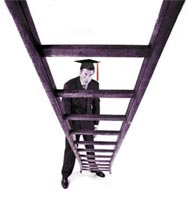


"Business to business is about meeting the needs of other businesses, though ultimately the demand for the products made by these businesses is likely to be driven by consumers in their homes" (B2B International).
The decision making unit is far more complex;
- Business to business products and their application are far more complex;
- They address a much smaller number of customers who are very much larger in their consumption of products than is the case in consumer markets;
- Personal relationships are of critical importance in business to business markets.
In cases within B2B marketing, organisations develop a partnership with their suppliers and other associates in order to exceed the level of demand and provide first class, value for money products for consumers. An example of this is the hugely popular Swedish born retailer IKEA who not only buys from its suppliers, it also involves them "in the process of delivering a stylish and affordable lifestyle" to its' customers. A case study into real marketing taken from Kotler's Principle's of Marketing states that the organisation could not survive without the support from all the suppliers, manufacturers and designers etc in order to continue to develop and produce highly popular and durable products. IKEA state that they always buy resources in bulk on a global scale so as to be in the position to offer the best and lowest prices to the customers.
There are three major types of buying situation involved with business to business markets: the straight rebuy which tends to be a fairly straightforward purchase in which a reorder of an existing product is made with no modifications; the modified rebuy may involve negotiating on the price of the product in question, altering the product specifications or even changing suppliers; and finally, the new task is where a product or service is purchased for the very first time by the organisation.
The buying centre or decision making unit of a business incorporates all the individuals that are involved in the buying process. There are five main roles within this unit including the users who will ultimately use the product or service; influencers who "help to define specifications and also provide information for evaluating alternatives;" buyers who generally tend to select the suppliers and negotiate purchase terms; deciders are the individuals with the power to select or approve the final suppliers or product; and gatekeepers "control the flow of information to others" (Kotler, 2008).
It is important to consider the total number of businesses that are involved in helping other businesses run successfully. For example, product manufacturers and suppliers require assistance and services from many sectors including gas, water and electricity so these individual companies must develop marketing strategies specifically targeted at fulfilling the requirements of the business so that they fend off competition and win contracts. With services such as those offered by PR, Marketing and advertising agencies, it is important to build a close relationship and ultimately build trust and manage efficient customer relationship management strategies due to the fact that in the business world there are far fewer customers in comparison to B2C markets and they cannot afford to lose any.  The forms of marketing communications used within business to business selling differ greatly from B2C markets in the way that majority of marketing spend goes towards personal selling. This is due to the fact that purchases are generally larger and of great value increasing the need to build a close and trusting relationship and get to know customers on a more personal level. Personal selling is followed by sales promotion as price is always seen to be one of the most important aspects for an organisation to consider. Occasionally, products or services are not always bought for cash. In some instances services have been exchanged between two companies (also known as reciprocity) for example, a software company and a car dealership where computer software may be exchanged for company cars etc. Leasing is also becoming a popular option as some products may be too expensive for organisations to buy outright or may be likely to need updating in the near future.
The forms of marketing communications used within business to business selling differ greatly from B2C markets in the way that majority of marketing spend goes towards personal selling. This is due to the fact that purchases are generally larger and of great value increasing the need to build a close and trusting relationship and get to know customers on a more personal level. Personal selling is followed by sales promotion as price is always seen to be one of the most important aspects for an organisation to consider. Occasionally, products or services are not always bought for cash. In some instances services have been exchanged between two companies (also known as reciprocity) for example, a software company and a car dealership where computer software may be exchanged for company cars etc. Leasing is also becoming a popular option as some products may be too expensive for organisations to buy outright or may be likely to need updating in the near future.
Business to business marketing is present in all industry sectors although some are more obvious than others. After gaining experience working for two companies that provide business to business services, it is clear that services provided specifically for businesses are imperative when considering the possible success of the business. One company I previously worked for provides counselling and psychology services to other businesses including popular high street banks and police forces. The services provided have shown to have an immediate effect on employee performance and retention but in the long term, the services provided to customers of the client are greatly improved helping to develop a good reputation for the brand. This proves to be an effective example of business to business partnerships reinforcing the fact that "demand is derived from final consumer demand."



 As mentioned above, the Greeks love to celebrate traditional festivities which often involves large parties. They have celebrations that we do not have in the UK such as Name Day celebrations which are perceived to be more important that birthdays. This is due to the fact that many Greeks owe their name to a religious saint that is worshipped in the church. Celebrations take place on a given day every year all over Greece and friends and family visit without invitation to offer their wishes as well as small presents, and are offered in return pastries, sweets and hors d'oeuvres provided by the hostess of the house.
As mentioned above, the Greeks love to celebrate traditional festivities which often involves large parties. They have celebrations that we do not have in the UK such as Name Day celebrations which are perceived to be more important that birthdays. This is due to the fact that many Greeks owe their name to a religious saint that is worshipped in the church. Celebrations take place on a given day every year all over Greece and friends and family visit without invitation to offer their wishes as well as small presents, and are offered in return pastries, sweets and hors d'oeuvres provided by the hostess of the house.





























